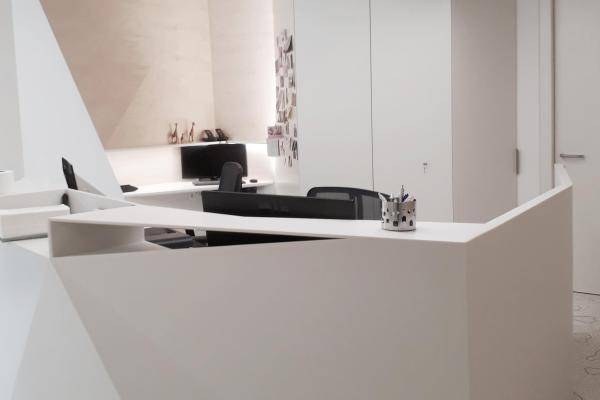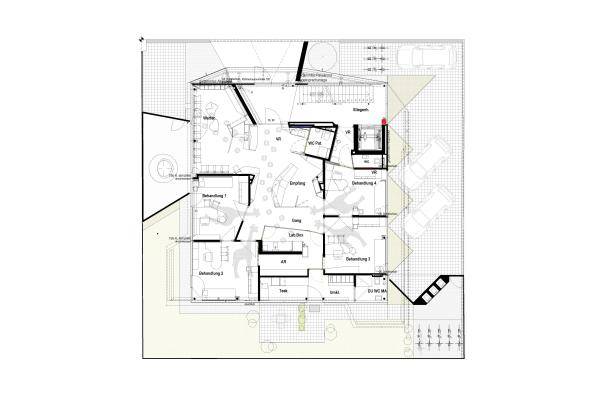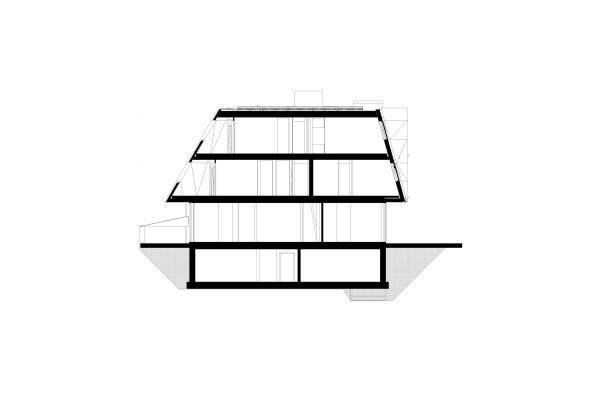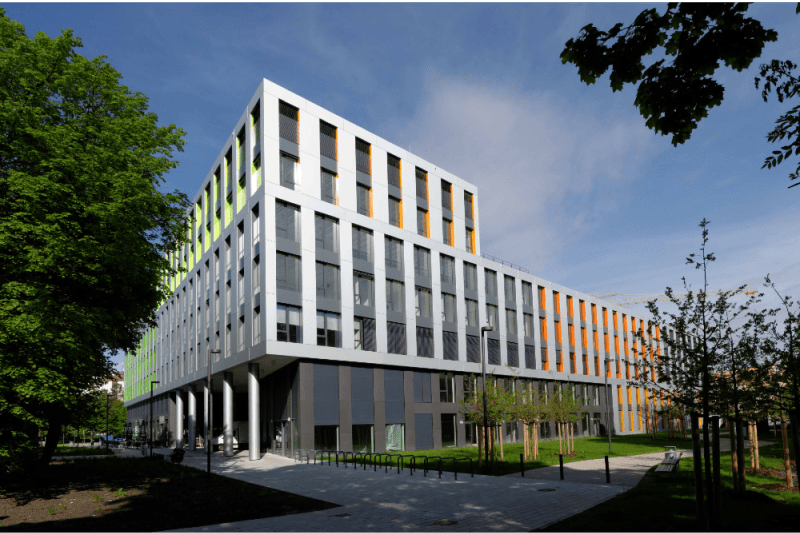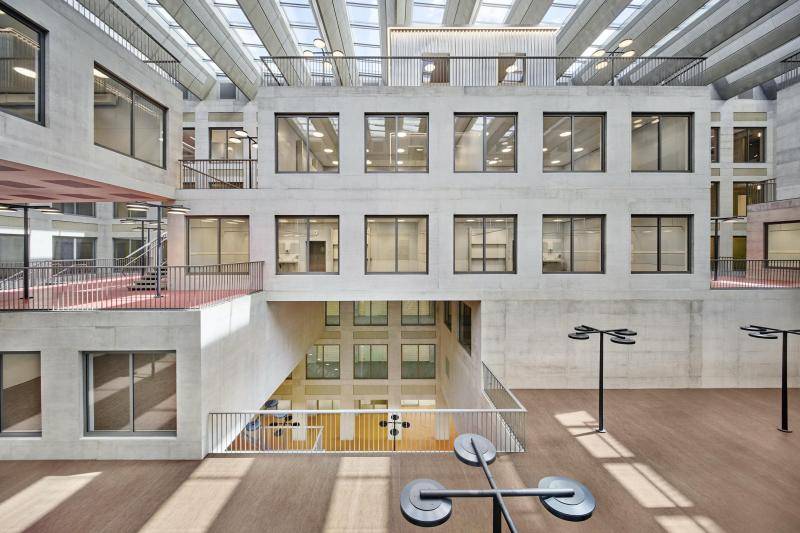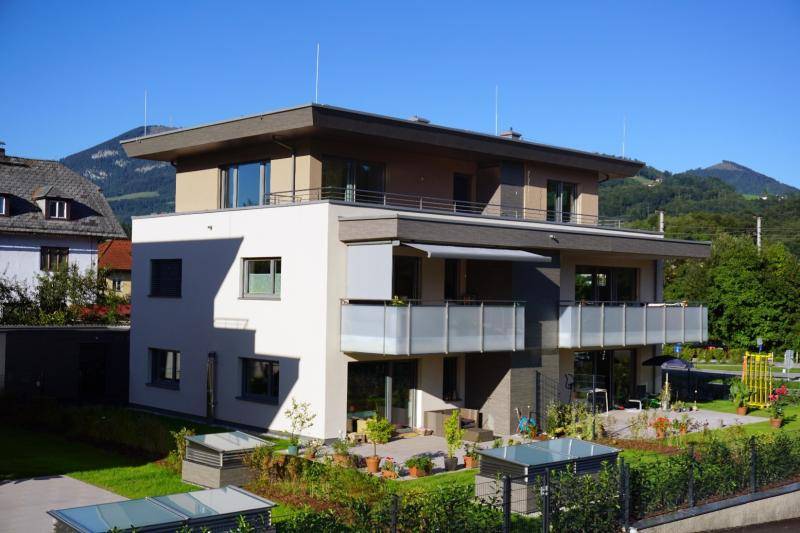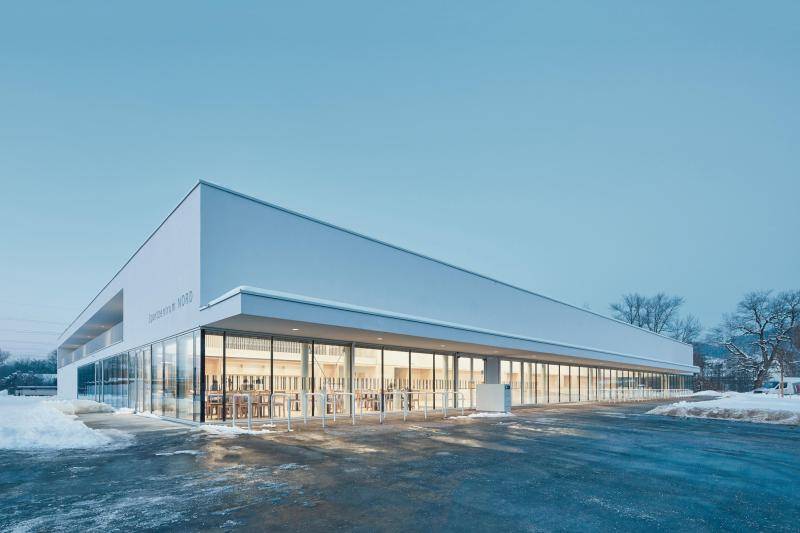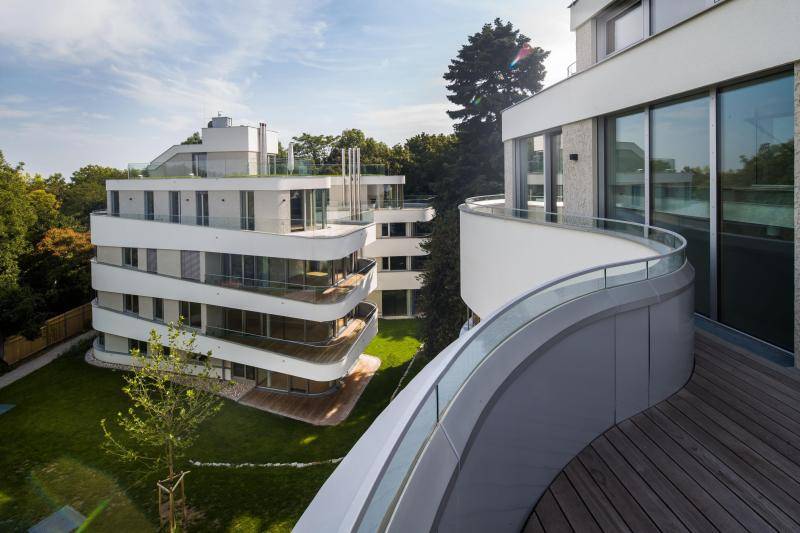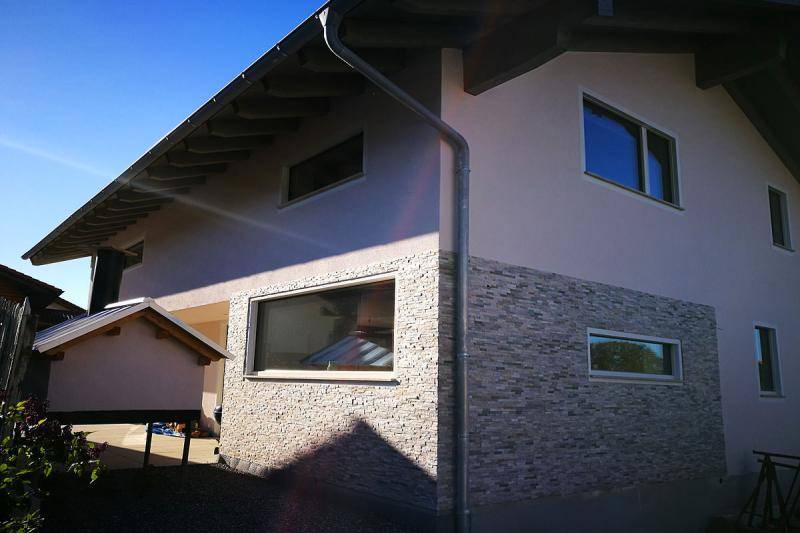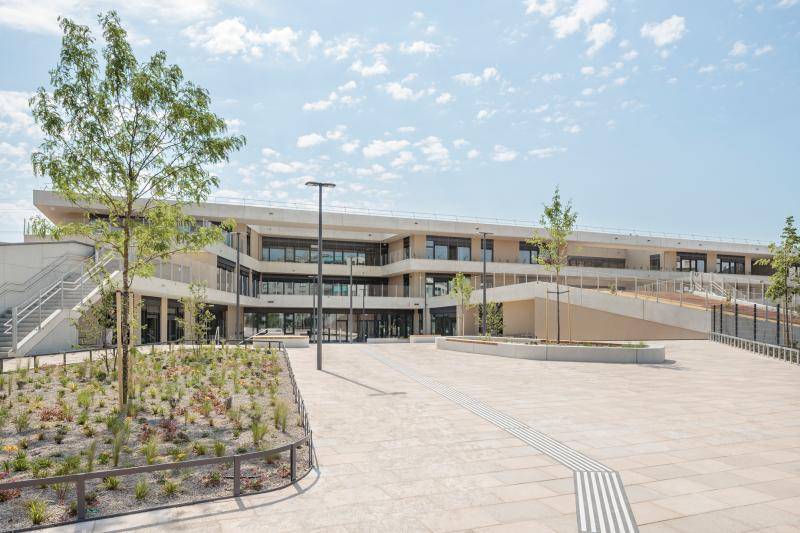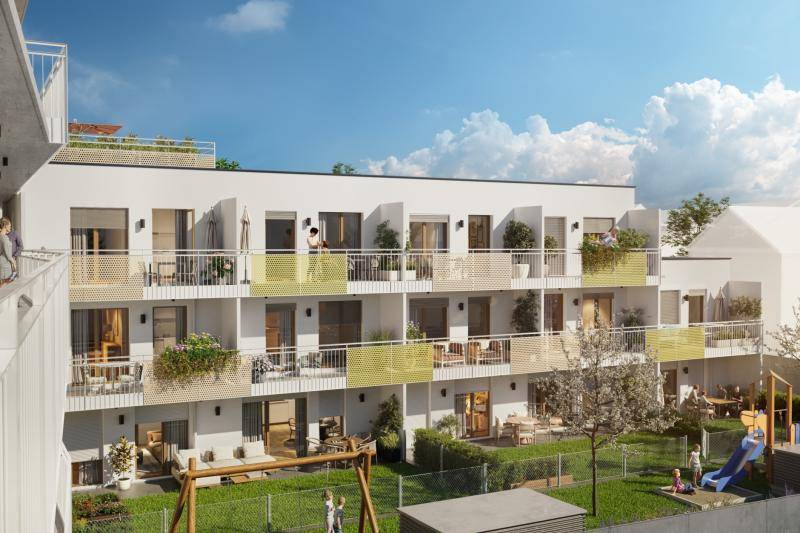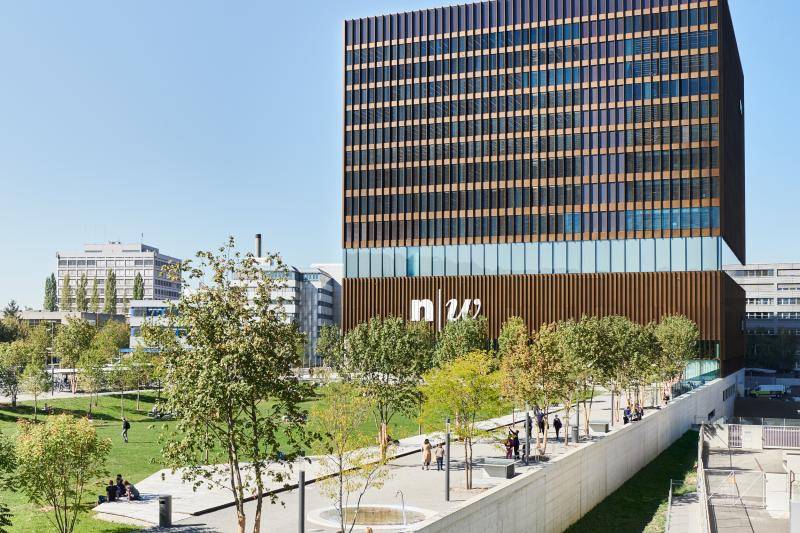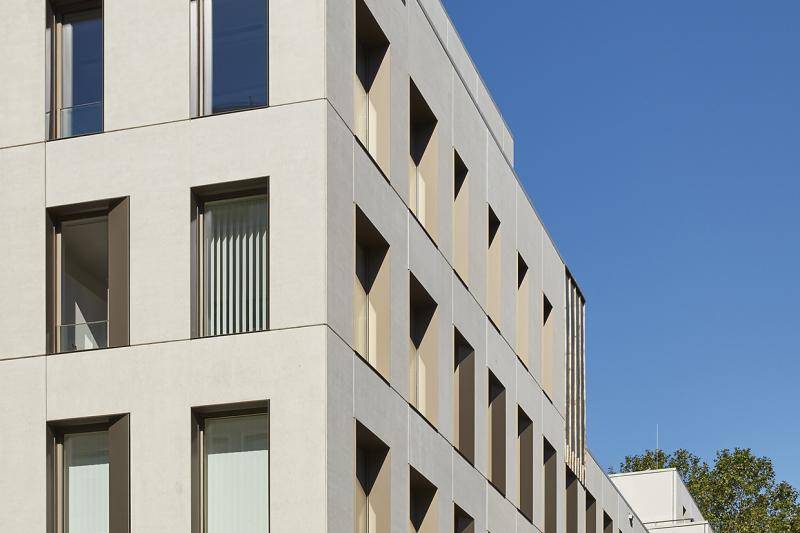Pediatric practice and apartments
The architects ad2 from Weiden am See in Burgenland prefer to work with concrete. At the pediatric practice of Dr. Langer in Perchtoldsdorf, south of Vienna, they use the concrete ceilings in several ways: for heating and cooling by means of component activation and as a design element.
Dr. Langer Immobilien GmbH
2017
Structural engineering: Gmeiner-Haferl Bauingenieur ZT GmbH
Installation: Pinetz GmbH
Building physics and acoustics: Dr. Jürgen Lukas, Petronell-Carnuntum
construction company: Sperhansl Bau GmbH
40 kWh/m²a
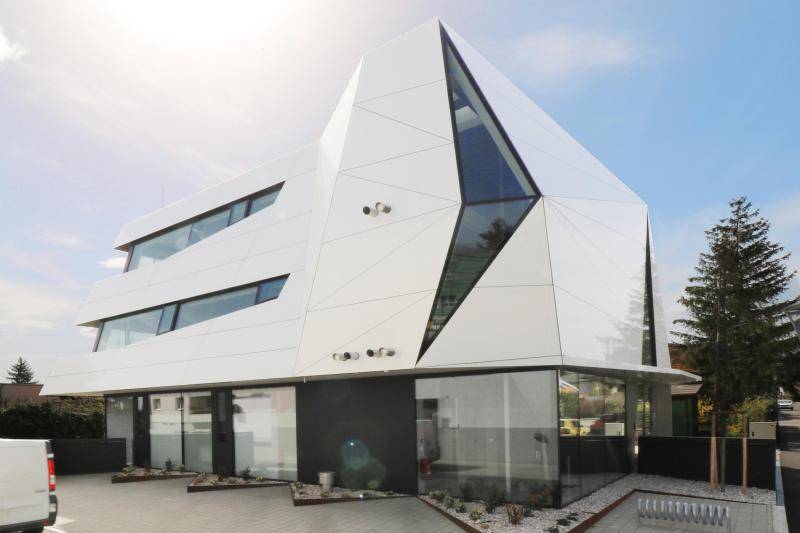
They have already demonstrated their creative use of concrete many times and received awards for it. In the pediatric practice, the relief of a giraffe wanders through the entire office, leaving its mark and giving the premises a uniform yet individual character. For the construction of a pediatric practice and three residential units on the upper floors - to refinance the project - the client invited two teams of architects to prepare preliminary designs and subsequently commissioned ad2 architekten to implement them. The site with an area of only 500 square meters was very tightly dimensioned for the intended cubature. In order to ensure that the building does not appear too imposing in the urban context, the planners found a new interpretation for the classic use of the building height with 45-degree sloping roof surfaces: The entire facade is designed as a "steep roof" or "sloping wall" from the first floor up.
Visits to the pediatrician's office, usually characterized by anxious expectations, narrow rooms and sterile furnishings, were to be redefined here. Homely, flooded with light and family-friendly were the client's requirements. The architects succeeded perfectly with generous spatial planning, a restrained technical presence and references to the animal world. The reception, the central point of contact, is positioned in the center of the floor plan. From here, the overview of the entire surgery is maintained - to the laboratory area, which is protected from view, the open waiting area at the entrance and the four treatment rooms. The latter are all oriented to the outside and are bright and friendly thanks to floor-to-ceiling windows. The same applies to the waiting area with play facilities for children of all ages, which merges into a play garden outside.
As in most of ad2 architekten's buildings, the ceilings in both the medical practice and the apartments are component-activated. "We use concrete not only for visual reasons, but also because of its storage capacity," explains Doser, "It makes sense to equip the required construction thicknesses with additional functions. In addition, building component activation is easy to implement in terms of craftsmanship on the construction site." Operated by an air-source heat pump, the building is heated in winter and cooled in summer by the building component activation alone. A photovoltaic system on the roof supplies the necessary electricity in the summer months, which is fed into the public grid when additional demand arises. A controlled ventilation system uses ground collectors to ensure sufficient fresh air in all rooms.
(Text: Brigitte Amort; Z+B magazine; in shortened form)
